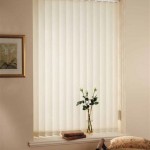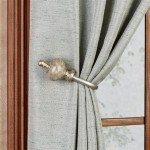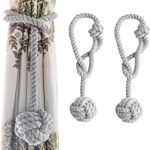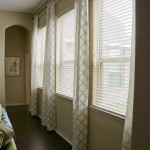Exclusive Fabrics And Furnishings Curtains: A Comprehensive Guide
Exclusive Fabrics and Furnishings is a company renowned for its extensive collection of high-quality fabrics and home décor items, with a particular emphasis on curtains. Their curtains range from simple, elegant designs to elaborate, intricately patterned styles, catering to a wide spectrum of aesthetic preferences and functional requirements. Understanding the nuances of their offerings, material options, construction techniques, and design considerations is crucial for making informed purchasing decisions.
This article will delve into the world of Exclusive Fabrics and Furnishings curtains, exploring the various aspects that contribute to their popularity and outlining the key factors to consider when selecting the perfect window treatments for any space. These considerations encompass material types, design styles, functionality, care instructions, and the overall impact of curtains on the ambiance and aesthetic of a room.
Understanding the Range of Materials Used in Exclusive Fabrics and Furnishings Curtains
The selection of materials used in crafting Exclusive Fabrics and Furnishings curtains is a significant factor influencing their appearance, durability, and overall performance. The company offers a diverse range of fabrics, each possessing unique characteristics that cater to different needs and preferences. Key material categories include natural fibers, synthetic fibers, and blends of both.
Natural fibers such as cotton, linen, silk, and wool are popular choices due to their inherent beauty, breathability, and luxurious feel. Cotton, a versatile and relatively affordable option, is known for its softness and ease of maintenance. Linen, prized for its texture and drape, adds a touch of rustic elegance to any room. Silk, with its lustrous sheen and delicate nature, is often favored for formal settings, offering a refined and sophisticated aesthetic. Wool, though less common in curtains due to its weight and potential for shrinkage, provides excellent insulation and a rich, textured appearance.
Synthetic fibers, including polyester, rayon, and acetate, offer enhanced durability, wrinkle resistance, and affordability. Polyester, a widely used option, is resistant to fading, shrinking, and stretching, making it ideal for high-traffic areas or rooms exposed to direct sunlight. Rayon, known for its silky drape and affordability, provides a luxurious feel at a lower cost. Acetate, resembling silk in appearance, is often used as a lining fabric to enhance the drape and opacity of curtains.
Blends of natural and synthetic fibers combine the benefits of both, offering a balance of beauty, durability, and affordability. For example, a cotton-polyester blend can provide the softness and breathability of cotton with the wrinkle resistance and durability of polyester. The specific blend ratio can be adjusted to tailor the fabric's properties to specific requirements.
Beyond the basic fiber composition, various finishing treatments can further enhance the properties of curtain fabrics. These treatments can include stain repellents, water resistance coatings, and UV protection, extending the lifespan and functionality of the curtains.
Exploring Design Styles and Construction Details of Exclusive Fabrics and Furnishings Curtains
Exclusive Fabrics and Furnishings offers a vast array of design styles, ranging from traditional and formal to contemporary and casual. The design style of the curtains should complement the overall décor of the room and reflect the personal taste of the homeowner. Careful consideration should be given to factors such as color, pattern, texture, and hardware when selecting the appropriate design style.
Traditional curtain styles often feature elaborate patterns, rich colors, and luxurious fabrics such as velvet, damask, and brocade. These styles typically incorporate details such as pleats, swags, and tails, creating a formal and opulent look. Contemporary curtain styles, on the other hand, tend to be simpler and more minimalist, featuring clean lines, neutral colors, and geometric patterns. Fabrics such as linen, cotton, and sheer voile are commonly used in contemporary designs.
Beyond the overall design style, the construction details of the curtains play a crucial role in their appearance and functionality. Key construction elements include the heading style, lining, and hem. The heading style refers to the way the curtains are attached to the rod. Common heading styles include pleats (such as pinch pleat, goblet pleat, and box pleat), grommets, rod pockets, and tab tops. Each heading style creates a different drape and aesthetic.
Lining is an essential element in many curtains, providing several benefits. Lining can enhance the privacy and light control provided by the curtains, protect the face fabric from fading, and add insulation to the room. Common lining options include blackout lining, which completely blocks out light; thermal lining, which helps to regulate the temperature of the room; and privacy lining, which provides a degree of privacy without completely blocking out light.
The hem is the finished edge of the curtain, and its quality can significantly impact the overall appearance and durability of the curtains. A well-executed hem will be straight, even, and free of loose threads. Blind hems, which are virtually invisible from the front of the curtain, are often preferred for a clean and professional look.
Functional Considerations: Light Control, Privacy, and Insulation
Beyond aesthetics, the functionality of curtains is a critical consideration. Curtains play a vital role in controlling light, providing privacy, and regulating the temperature of a room. The specific functional requirements will depend on the location of the room, the orientation of the windows, and the personal preferences of the occupants.
Light control is a primary function of curtains. The ability to block out light completely is essential for bedrooms, particularly for individuals who are sensitive to light or who work night shifts. Blackout curtains, which are made with a special opaque fabric, provide the highest level of light control. For other rooms, such as living rooms or dining rooms, the ability to filter light may be preferred over completely blocking it out. Sheer curtains or curtains with a light-filtering lining can diffuse sunlight, creating a soft and inviting ambiance.
Privacy is another important consideration, particularly for rooms that face busy streets or have windows that are easily visible from neighboring properties. The level of privacy required will depend on the specific situation. Opaque curtains provide the highest level of privacy, while sheer curtains offer minimal privacy. Curtains with a privacy lining provide a good balance between light control and privacy.
Insulation is a crucial functional benefit of curtains, particularly in climates with extreme temperatures. Curtains can help to reduce heat loss in the winter and heat gain in the summer, saving energy and improving the comfort of the room. Thermal curtains, which are made with a special insulating fabric, provide the best level of insulation. Even unlined curtains can provide some degree of insulation by creating a barrier between the window and the room.
The combination of material, construction, and lining will ultimately determine the effectiveness of the curtains in providing light control, privacy, and insulation. Careful consideration should be given to these functional requirements when selecting curtains for any space.
The color and pattern of curtains also play a crucial role in the overall ambiance of a room. Light colors tend to make a room feel brighter and more spacious, while dark colors can create a more intimate and cozy atmosphere. Patterns can add visual interest and personality to a room. When selecting colors and patterns, it is important to consider the existing décor of the room and the desired overall effect.
Proper care and maintenance are essential for extending the lifespan of curtains. The specific care instructions will depend on the material of the curtains. Generally, it is recommended to vacuum curtains regularly to remove dust and debris. Dry cleaning is often recommended for delicate fabrics such as silk and velvet. Machine-washable curtains should be washed in cold water on a gentle cycle. It is important to follow the manufacturer's instructions carefully to avoid damaging the curtains.
The choice of curtain hardware, including rods, brackets, and rings, can significantly impact the overall look and functionality of the curtains. The rod should be strong enough to support the weight of the curtains and should be positioned at the appropriate height. The brackets should be securely mounted to the wall. The rings should allow the curtains to glide smoothly along the rod. The style of the hardware should complement the design style of the curtains and the overall décor of the room.
Ultimately, selecting the perfect curtains from Exclusive Fabrics and Furnishings involves a careful consideration of material options, design styles, construction details, functional requirements, and personal preferences. By taking these factors into account, individuals can create a space that is both beautiful and functional, reflecting their unique taste and style.

Half Drapes Extra Wide Heritage Plush Velvet Room Darkening Curtain Light Beige

Wild Blue Bellino Blackout Room Darkening Curtain 50 In W X 108 L

Sepia Beige Italian Faux Linen Room Darkening Curtain 50 In W X 120 L 1 Panel

Exclusive Fabrics And Furnishings Curtain 100 W X 84 L Heather Grey 1 Panel

Exclusive Fabrics Furnishings Flax Gold Solid Rod Pocket Room Darkening Curtain 50 In W X 96 L 1 Panel Pdch Kbs8

Exclusive Fabrics And Furnishings Curtain 100 W X 84 L Story Blue 1 Panel

Exclusive Fabrics Furnishings Curtains 50 X 120 Pocket Blackout Silver Grey 610395222927

Exclusive Fabrics Furnishings Blackout Faux Linen Panels Macy S

Blackout Grommet Curtain Panels

Exclusive Fabrics And Furnishings Blackout Curtains 50 Wx108 L Plush Velvet








